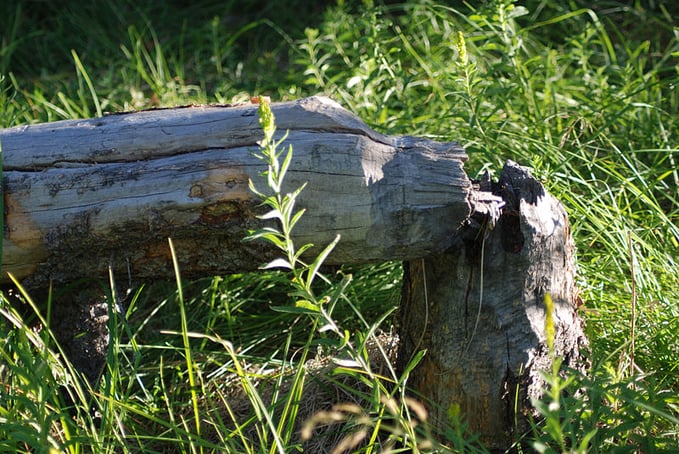
Animals in remote areas do more harm to wood poles than people realize, and they can do a lot of damage very fast. Woodpeckers bore holes in poles to get at the termites within, and bees can make homes in the holes left behind. Beavers sometimes gnaw them. Bears scratch, bite and rub their bodies on them to mark their territory, find food and groom. And antlered animals like deer and elk rub and scrape their antlers on wood poles to shed velvet and leave the territory and mating markings.
At best, these behaviors are inconvenient and unsightly, covering the poles in gouges and rough surfaces. Beyond aesthetics, they can cause power outages if the lines are affected. And at worst, they risk wildfires if downed lines spark. Choosing a manmade material like Fiber Reinforced Polymer (FRP), which doesn’t feel like the natural materials used for marking and grooming, helps keep infrastructure safe from indifferent animals.
Just Another Tree
Wild animals can be forgiven for mistaking a wood utility pole for just another tree. But that doesn’t change the damage they can do to these poles and the potentially devastating impact this damage has on human infrastructure.
Bears love to mark trees – and poles, especially red cedar ones. There is much anecdotal evidence of hunters and wildlife enthusiasts seeing evidence of elk and deer rubbing their antlers on utility poles. And beavers have been known to gnaw almost completely through a wood pole. From gashes to full destruction, these animals’ natural behaviors can take the already limited life of a wood utility pole down to just a few years.
As it is unlawful to harm or kill woodpeckers even if they’re harming property, most states in the U.S. have laws against harming or killing beavers, elk, deer and bears. In most states, elk and deer may be hunted during the appropriate season by properly licensed individuals, while beavers and many species of bears are allowed only to be removed/relocated and must not be harmed.
So, in most cases, the only option is to deter the behaviors ruining wood poles before they can take a bite out of the pole’s service life. A fully synthetic alternative, like a Creative Composites Group (CCG) FRP pole, keeps animals at bay with its smooth surface and undesirable texture when consumed. (Beavers won’t chew fiberglass – it would hurt, just like humans would be hurt eating a handful of fiberglass insulation in their attic.)
But it’s impractical to rip out functioning wood poles before the end of their service life. The cost alone is prohibitive. To help utilities save money on reinstallation and to protect existing wood assets, CCG once again delivered.
CCG Animal Guard Protect Wood Poles
CCG was approached by a west coast utility seeking a solution to the great expense of remediating beaver and elk damage to their wood utility poles. Our team got to work on a guard that would deter damage from wildlife without inconveniencing field crews. The result was the CCG Animal Guard.
Animal Guard is the first CCG guard specifically designed to protect utility poles from animal damage, and it is the first product designed for use with non-CCG poles. It joins the ranks of CCG’s other guard products for waterfront applications, utility pole wear-and-tear and fire protection.
Hassle-Free Installation
Many of us at CCG began our careers on utility field crews. When we design new products, we always keep in mind what equipment a maintenance or line crew will have on their trucks and the process capabilities they already have. The Animal Guard is tapered to fit the taper of a wood pole and is round molded with a slit that allows the lineman to open the guard and slip it around the pole. After burying it up to a foot below the ground, the guard is then fixed with the stainless-steel bands already on the truck or screws may be drilled directly into the guard and pole. This guard requires no specialized installation, no special parts to fix it down and no specialized training, all while deterring the critters that ruin normal wood poles and chew through thermoplastics.
As the wood utility pole market creeps closer to a major shortage and the labor needed to install new poles remains scarce, it’s essential to keep your existing wood poles in excellent condition for longer. Sustain your current assets to save time, money and logistical problems later. Protect your wooden poles from indifferent animals with the CCG Animal Guard. Contact us today to discuss this new product and how it may help your situation.
